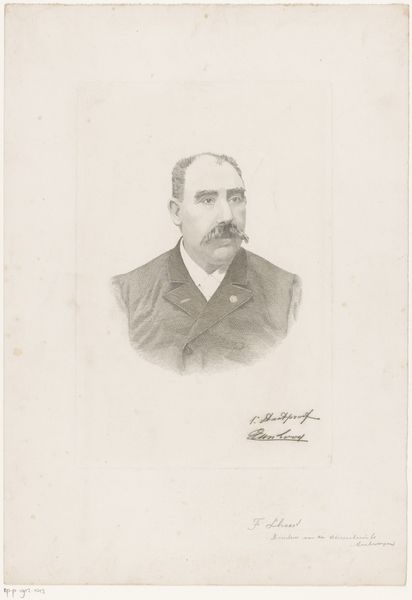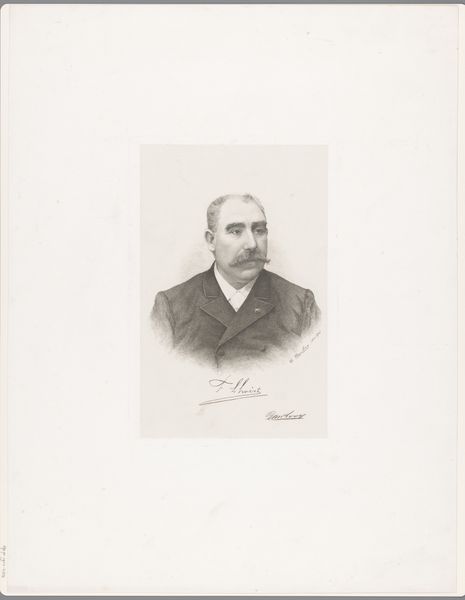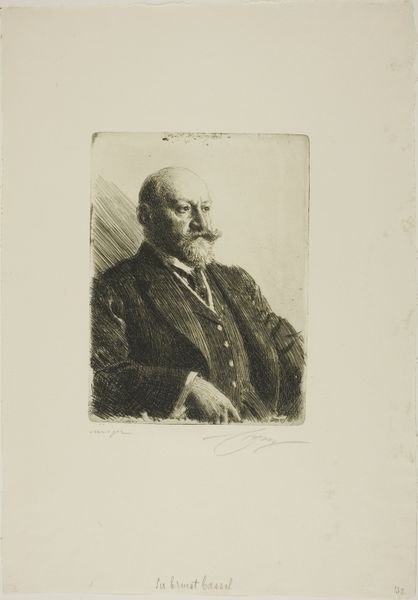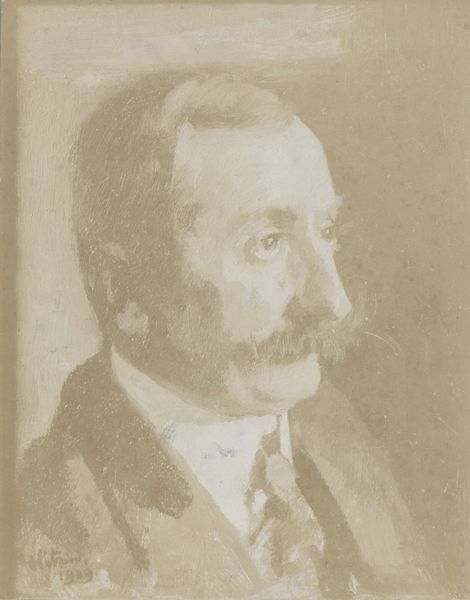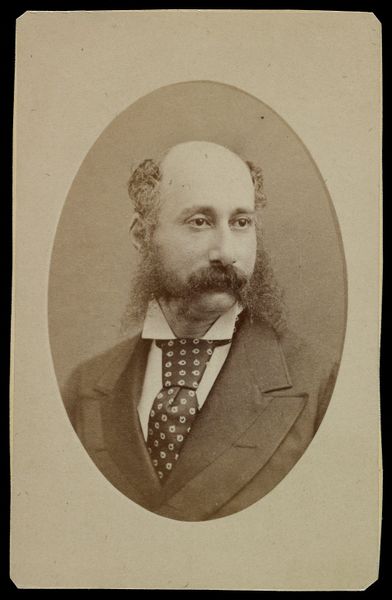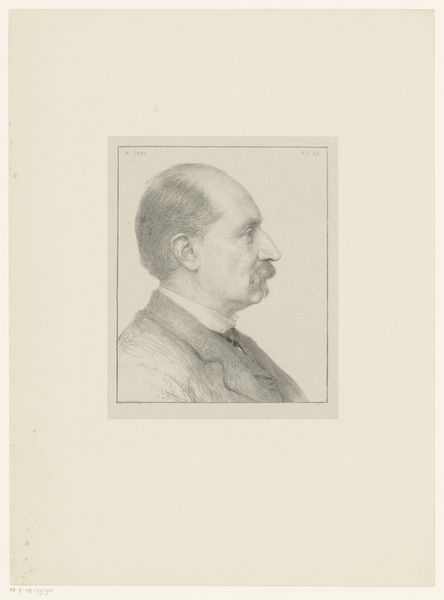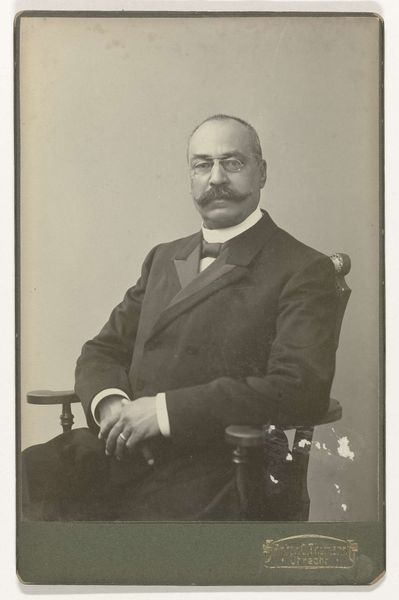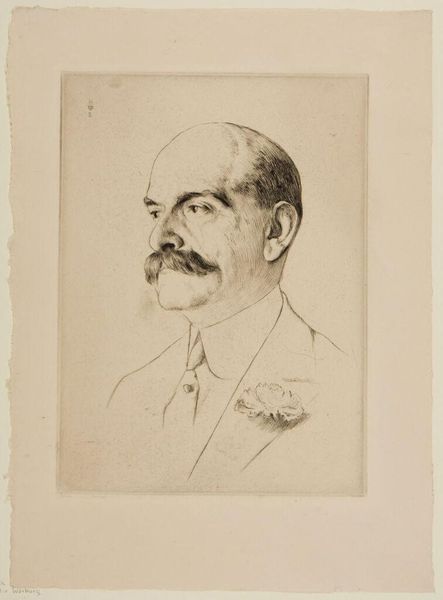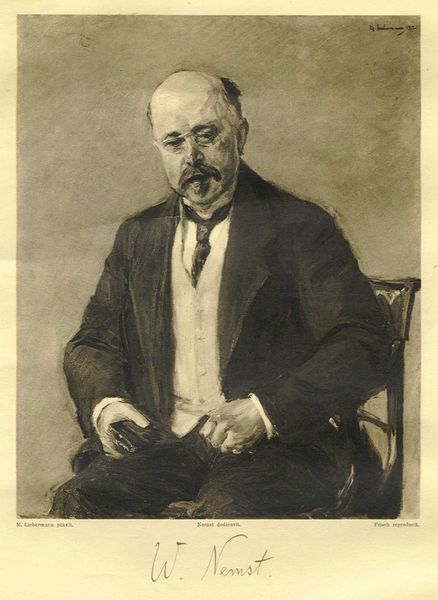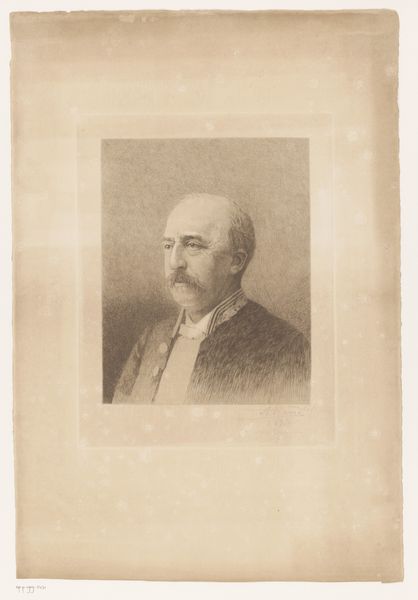
drawing, pencil
#
portrait
#
drawing
#
pencil
#
portrait drawing
#
academic-art
#
modernism
#
realism
Copyright: Public domain
Curator: Émile Friant’s "Louis Compaignon De Marchéville," executed in pencil in 1923, presents a striking study in academic realism. Editor: Immediately, I notice the stark quality of the pencil on paper. It brings to mind the artist's hand—the directness of mark-making. The sketch seems almost like a document of labor. Curator: Precisely! Look closely at the sitter's relaxed posture, the casual hand gesture, the implied narrative – perhaps capturing a fleeting moment. Observe how Friant masterfully models the face, achieving a remarkable likeness and subtle sense of character using only the tonal variations achievable with graphite. Editor: And there is such delicacy here! I’m drawn to the detail in the mustache, rendered in numerous and refined marks. And the paper! Considering it’s been over a hundred years, it bears evidence of age and handling, and a testament to the life of the artwork as a physical object. I also see an assertive signature placed toward the bottom right of the image. Curator: The linear precision with which Friant renders fabric—observe the subtle drapery and texture achieved, juxtaposed against the velvety soft rendering of the face— speaks volumes about the artist's technical prowess. Editor: Let's not overlook the social context either! A portrait like this certainly signifies status and access. What was Marchéville’s world? His habits? We might surmise this portrait fulfilled some type of material or social purpose, far beyond the artist's solitary work. Who did he commission for? What pencil did Friant use? These tangible conditions greatly informed what is put on the paper in front of us. Curator: An astute observation, but one can’t diminish the undeniable quality of Friant's drawing, in this work's capacity to express form through careful manipulation of light and shadow, regardless of the era or purpose of it being made. Editor: Perhaps the synthesis, then, lies in the tension between the material conditions that enabled the drawing and the artistic vision so apparent in its execution. A nice conversation between those ideas is evoked from simply observing the marks on paper and what lies beneath the surface.
Comments
No comments
Be the first to comment and join the conversation on the ultimate creative platform.

